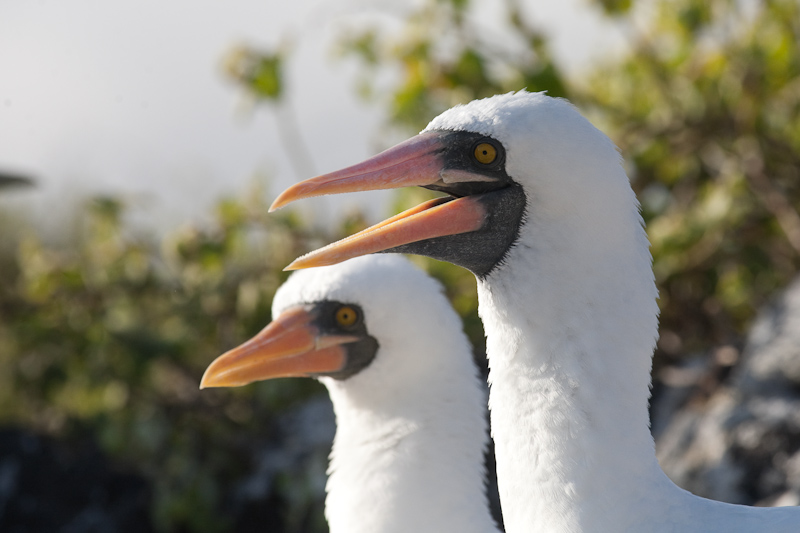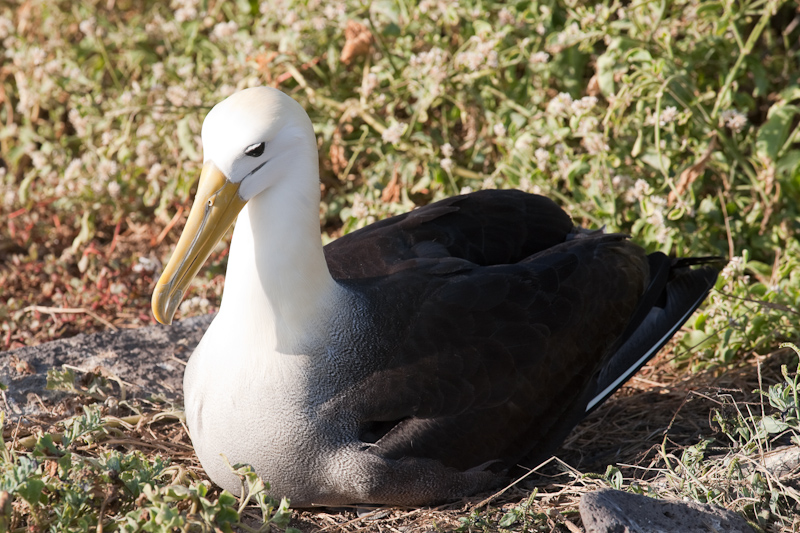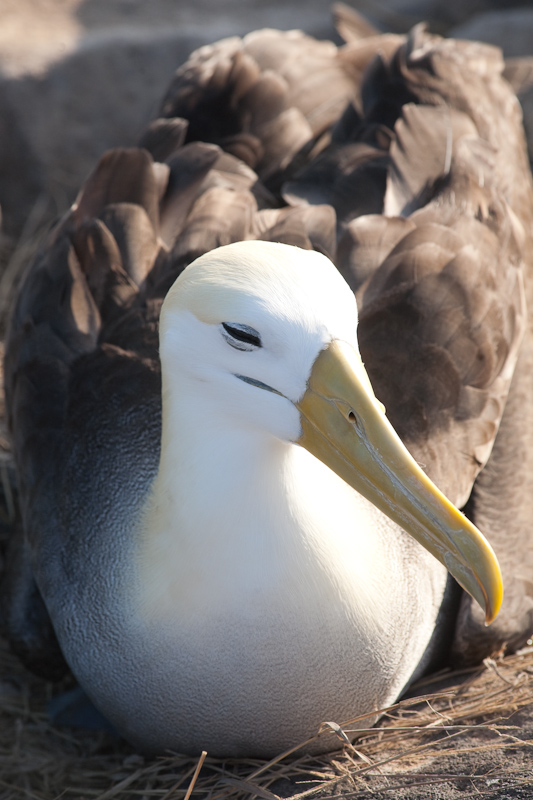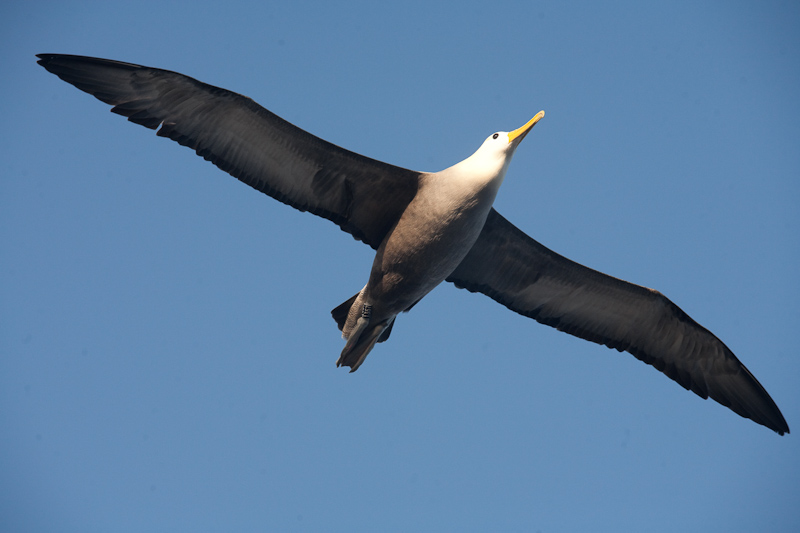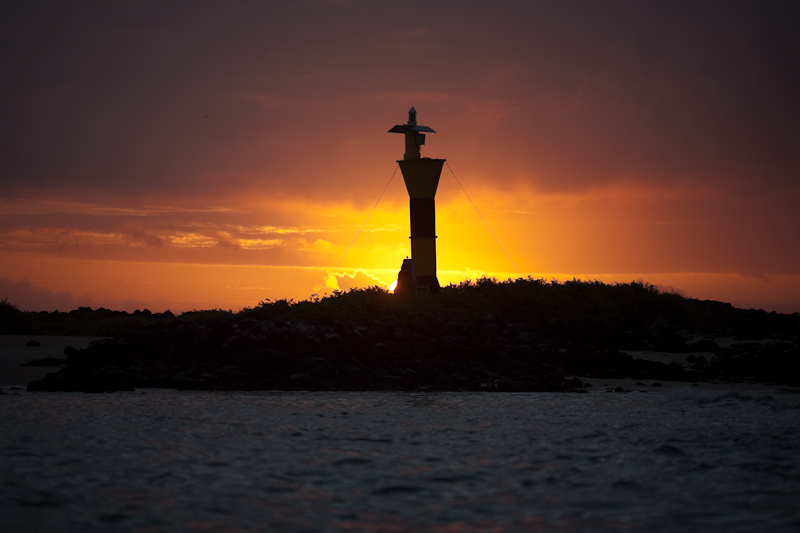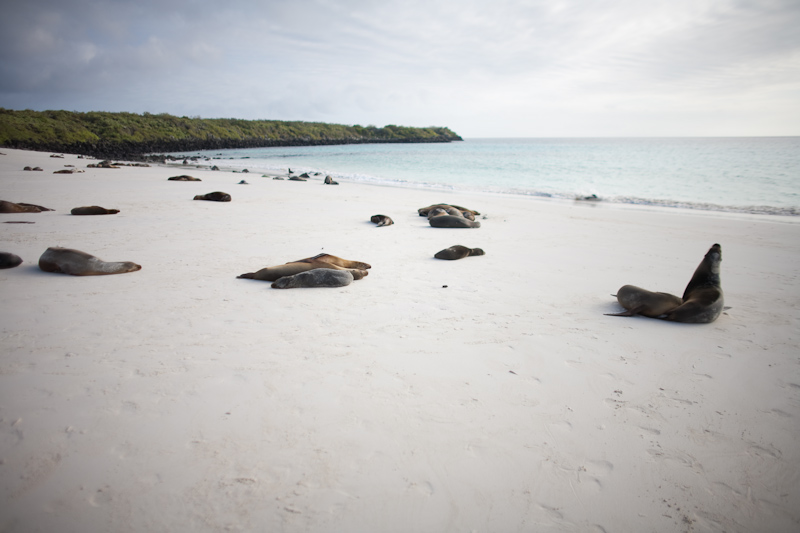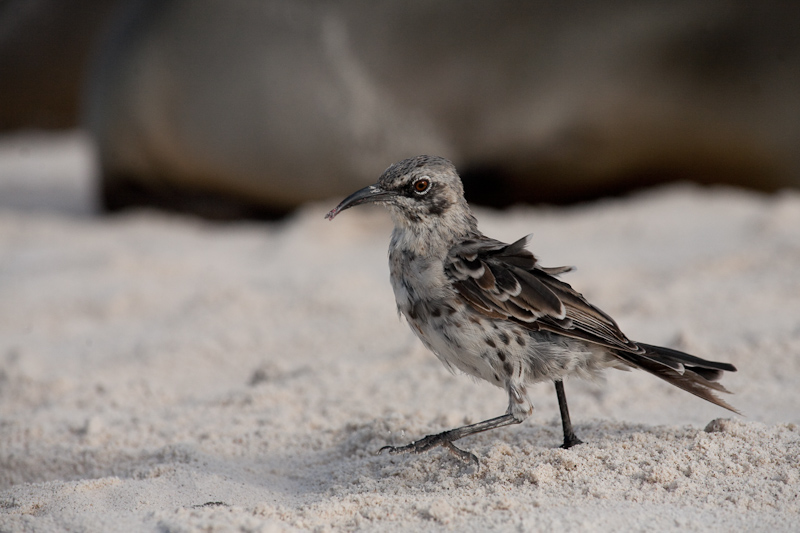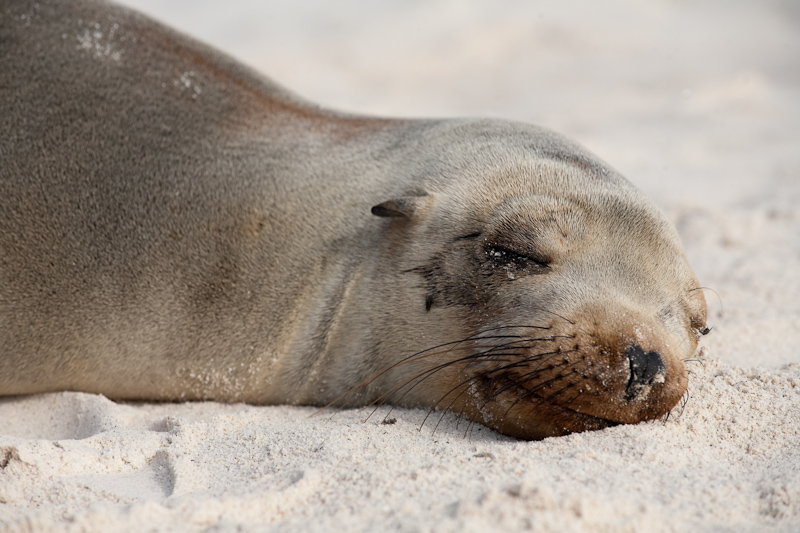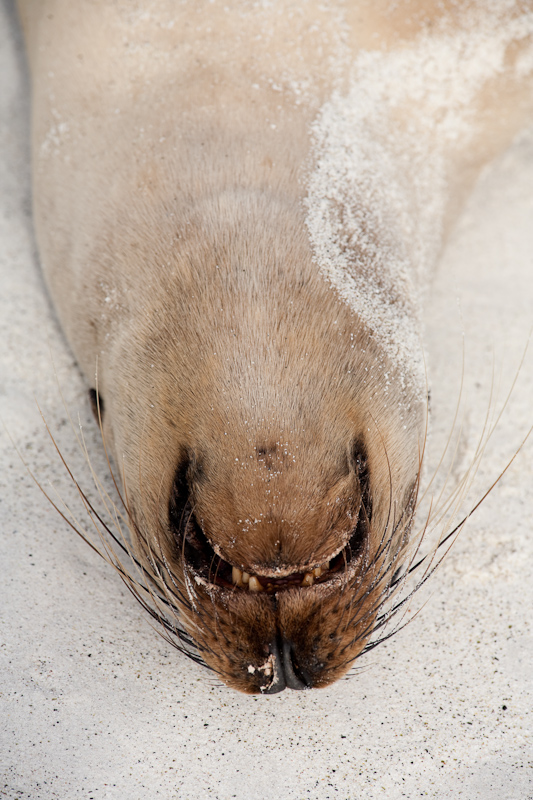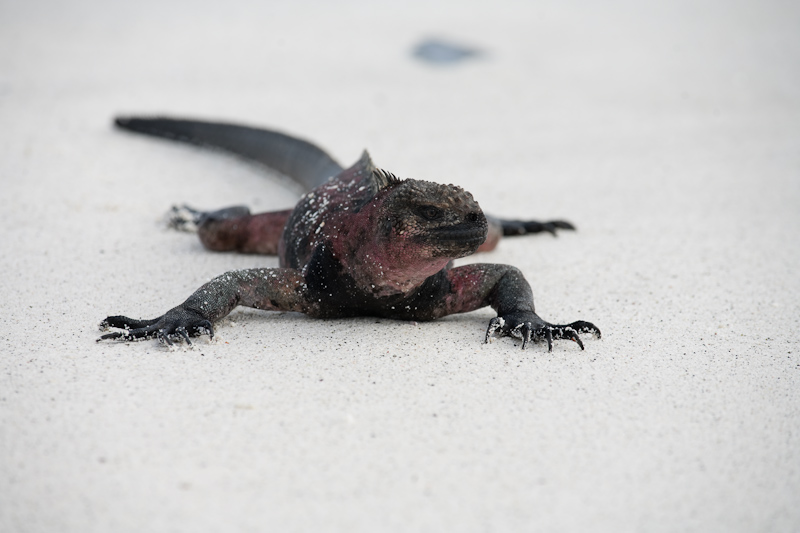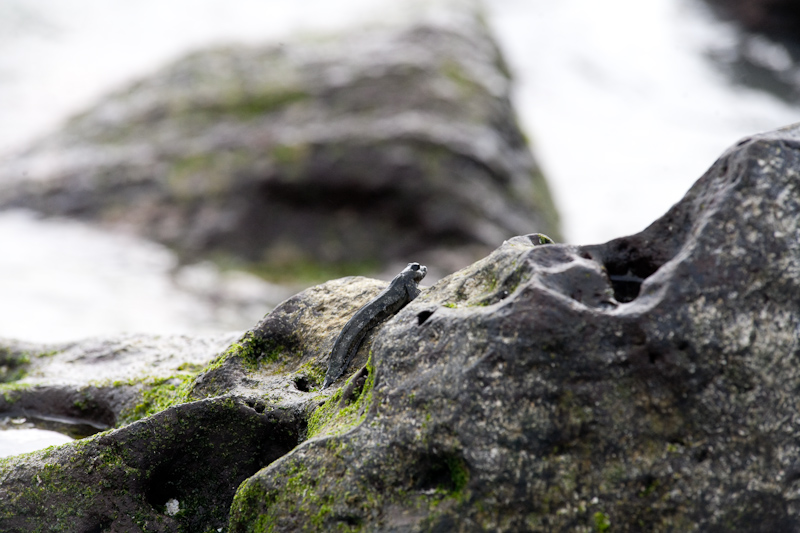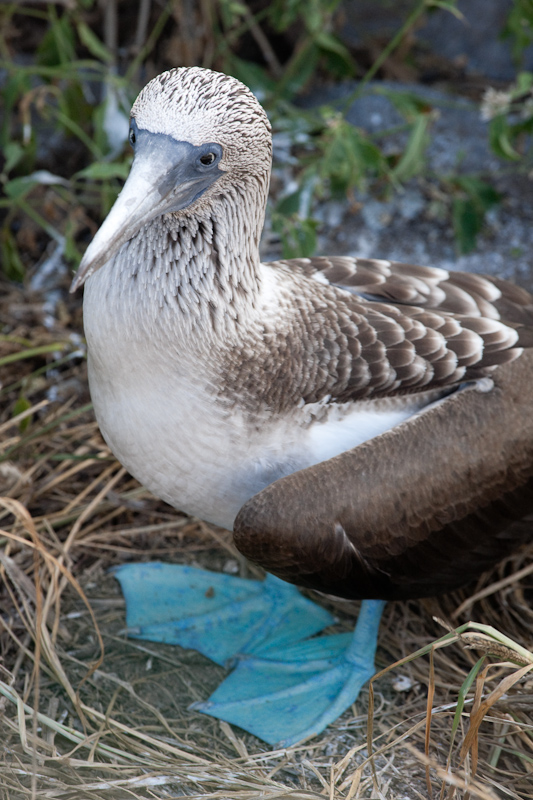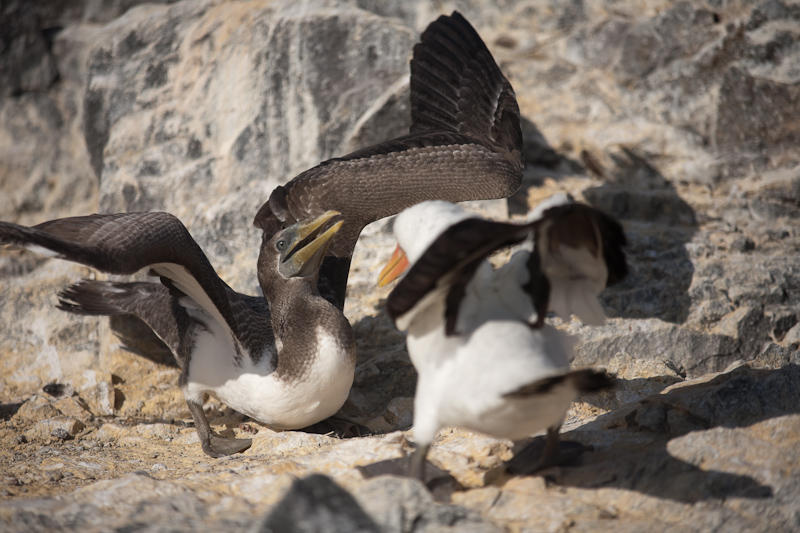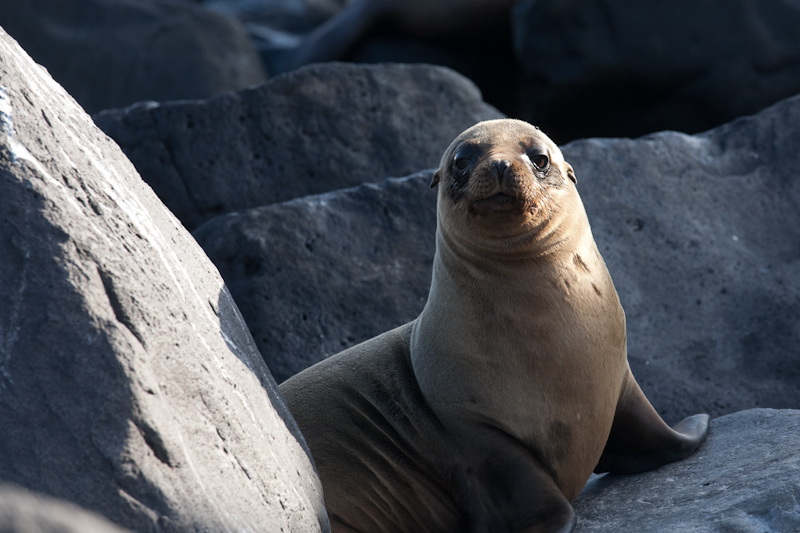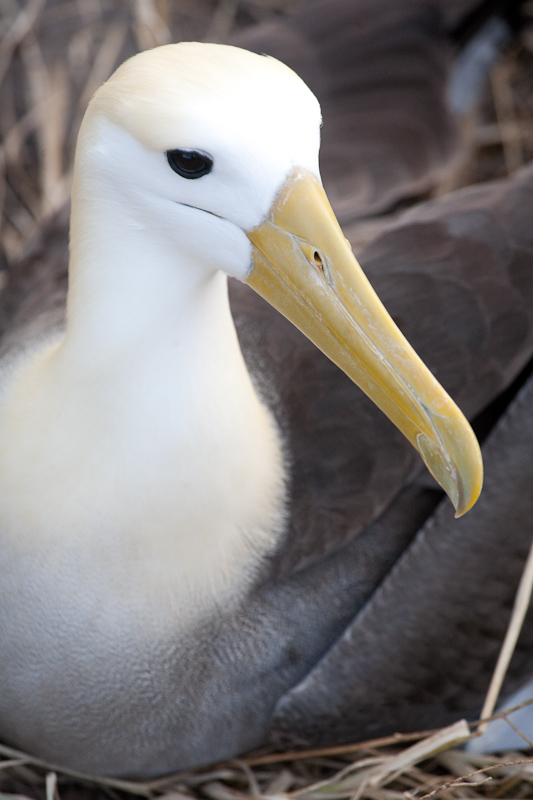
These photos are from day 3 of our Galapagos trip back in June. I didn’t realize I had more photos from the same day, so here is Part 3b.
In the late afternoon, we made our way back onto Espanola island to see boobies and albatrosses.
It was teeming with life and the sounds of life.. though it was very interesting to me that there was not much biodiversity. But there were large populations of the few species that was saw. Or maybe that was just my impression as this was in direct contrast to our experience in the Ecuadorian Amazon – where there is incredible biodiversity but only a small number of each plant or animal in any given area.
–
We were immediately greeted by boobies. This male nazca booby was making clicking sounds in an attempt to attract a mate.
after maybe a 10 minute walk, we came upon the breeding area of the waved albatross (Phoebastria irrorata) or the galapagos albatross.
Some of them were nesting, sitting on eggs.
Our guide explained that the albatross is very heavy for a bird and has a giant wingspan, which makes it a super-efficient glider but clumsy when traveling at a low speed.
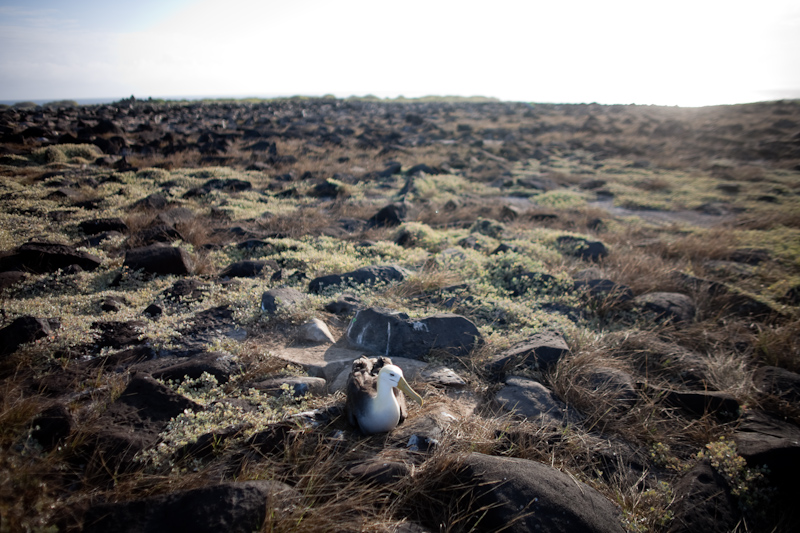 They spend most of their lives flying, and are generally on land only to breed.
They spend most of their lives flying, and are generally on land only to breed.
Here’s a photo of some of our tour group who walked ahead while I stared at the giant birds.
The waved albatrosses don’t fly well at low speeds and thus have a hard time landing. We watched the same birds circle the landing area a number of times and finally make an attempt to land, only to abort the landing at the very last moment. Here’s one lowering its landing gear:
And this photo shows off their giant wingspan:
It was neat that a bird could look so majestic and goofy at the same time. We saw a couple of birds perform their complex courtship, which involves a lot of walking in circles and clacking of beaks. They mate for life.
As we walked back to the dock and boarded our panga, we were treated to a beautiful sunset:
and we had dinner and relaxed.

